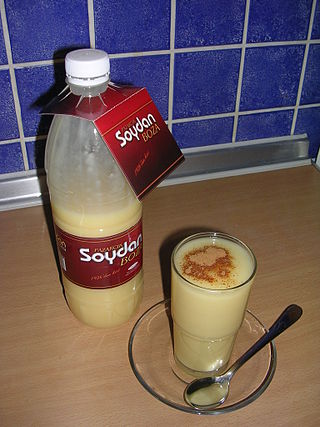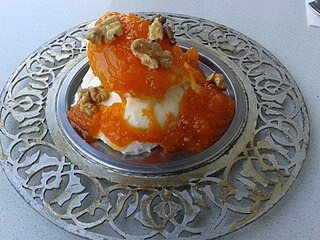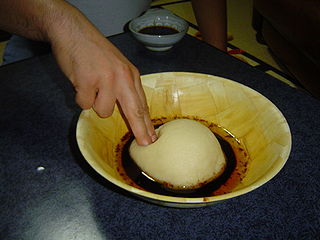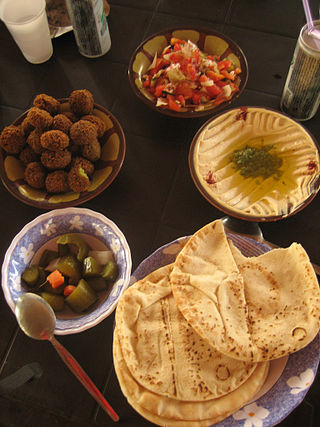
A drink or beverage is a liquid intended for human consumption. In addition to their basic function of satisfying thirst, drinks play important roles in human culture. Common types of drinks include plain drinking water, milk, juice, smoothies and soft drinks. Traditionally warm beverages include coffee, tea, and hot chocolate. Caffeinated drinks that contain the stimulant caffeine have a long history.

Orchids are plants that belong to the family Orchidaceae, a diverse and widespread group of flowering plants with blooms that are often colourful and fragrant. Orchids are cosmopolitan plants that are found in almost every habitat on Earth except glaciers. The world's richest diversity of orchid genera and species is found in the tropics.

Anacamptis pyramidalis, the pyramidal orchid, is a perennial herbaceous plant belonging to the genus Anacamptis of the family Orchidaceae. The scientific name Anacamptis derives from Greek ανακάμτειν 'anakamptein' meaning 'bend forward', while the Latin name pyramidalis refers to the pyramidal form of the inflorescence.

Turkish coffee is a style of coffee prepared in a cezve using very finely ground coffee beans without filtering.

Boza, also bosa, is a fermented beverage originating from Central Asia and made in parts of Turkey, Central Asia, the Caucasus, and North Africa. It is a malt drink made by fermenting various grains: maize (corn) and wheat in Turkey. It's one of the oldest Turkic beverages. It has a thick consistency, a low alcohol content, and a slightly acidic sweet flavor.

Dondurma is Turkish mastic ice cream. It typically includes the ingredients cream, whipped cream, salep, mastic, and sugar. It is believed to originate from the city and region of Kahramanmaraş, and hence is also known as maraş dondurma.

A caffè mocha, also called mocaccino, is a chocolate-flavoured warm beverage that is a variant of a caffè latte, commonly served in a glass rather than a mug. Other commonly used spellings are mochaccino and also mochachino. The name is derived from the city of Mokha, Yemen, which was one of the centres of early coffee trade. Like latte, the name is commonly shortened to just mocha.

Arabic coffee is a version of the brewed coffee of Coffea arabica beans. Most Arab countries throughout the Middle East have developed distinct methods for brewing and preparing coffee. Cardamom is an often-added spice, but it can alternatively be served plain or with sugar.

Macedonian cuisine is the traditional cuisine of North Macedonia. It is influenced by Ottoman and Balkan cuisines. The relatively warm climate of the country provides excellent growth conditions for a variety of vegetables, herbs and fruits. Macedonian cuisine is also noted for the diversity and quality of its dairy products, wines, and local alcoholic beverages, such as rakija. Tavče gravče and mastika are considered the national dish and drink of North Macedonia.

Orchis mascula, the early-purple orchid, early spring orchis, is a species of flowering plant in the orchid family, Orchidaceae.

Egyptian cuisine makes heavy use of poultry, legumes, vegetables and fruit from Egypt's rich Nile Valley and Delta. Examples of Egyptian dishes include rice-stuffed vegetables and grape leaves, hummus, falafel, shawarma, kebab and kofta. Others include ful medames, mashed fava beans; koshary, lentils and pasta; and molokhiya, bush okra stew. A local type of pita bread known as eish baladi is a staple of Egyptian cuisine, and cheesemaking in Egypt dates back to the First Dynasty of Egypt, with Domiati being the most popular type of cheese consumed today.

Palestinian cuisine consists of foods from or commonly eaten by Palestinians, whether in Palestine, Israel, Jordan, or refugee camps in nearby countries, or by the Palestinian diaspora. The cuisine is a diffusion of the cultures of civilizations that settled in the region of Palestine, particularly during and after the Islamic era beginning with the Arab Ummayad conquest, then the eventual Persian-influenced Abbasids and ending with the strong influences of Turkish cuisine, resulting from the coming of the Ottoman Turks. It is similar to other Levantine cuisines, including Lebanese, Syrian and Jordanian.

The cuisine of Bahrain consists of dishes such as biryani, harees, khabeesa, machboos, mahyawa, quzi and zalabia. Arabic coffee (qahwah) is the national beverage.

The cuisine of Libya is a mix of Berber, Arab and Mediterranean cuisines with Ottoman and Italian influence. One of the most popular Libyan dishes is bazin, an unleavened bread prepared with barley, water and salt. Bazin is prepared by boiling barley flour in water and then beating it to create a dough using a magraf, which is a unique stick designed for this purpose.

Jordanian cuisine is a Levantine cuisine developed over time in Jordan. Stuffed vegetables are common, with many different techniques employed in their preparation. Meat is an important component of Jordanian cuisine, most often lamb, beef and chicken but also goat and camel meat. Rice is frequently served as a side dish but there are also one-pot rice dishes such as maqloubah.

De materia medica is a pharmacopoeia of medicinal plants and the medicines that can be obtained from them. The five-volume work was written between 50 and 70 CE by Pedanius Dioscorides, a Greek physician in the Roman army. It was widely read for more than 1,500 years until supplanted by revised herbals in the Renaissance, making it one of the longest-lasting of all natural history and pharmacology books.

Chikanda is a Zambian dish made from the boiled root tubers of terrestrial orchids also called chikanda. The dish is often called "African polony" because it has a texture that resembles bologna. Chikanda can be eaten as a snack, dessert, or an accompaniment to nshima, a maize flour porridge.



















